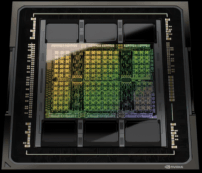How do you enter the metaverse? As Matthew Ball explains in his book, Metaverse Primer, it is an expansive network of persistent, real-time rendered 3D worlds and simulations. Your digital avatar is your single point of entry and identity as you join, explore, engage and experience the metaverse.
But what’s an avatar? It’s a virtual character that users create to represent themselves in cyberspace. There’s no limit to how these avatars can look, as they can be entirely different from our real-life selves. You can style them, dress them in uber digital fashion, live in ultra settings, and attend exclusive, immersive events – all inside the metaverse.
Related: Why it would be risky to host NFTs in a centralised metaverse
Evolving from 2D to 3D identities
Most of us have witnessed the gradual evolution of digital identities over time. In the present Web2 world, we represent ourselves in the digital world through user ID or a profile picture. But as technology continues to evolve, our 2D profile pictures will become obsolete eventually.
3D avatars have, over time, become popular due to advancements in the hardware and software systems that allow users to replicate real-world movements using sensors. The expanding metaverses could be credited to the user’s urge to manifest themselves visually in the digital world.
Related: The DreamVR chooses to build on Cudos to design an all-in-one metaverse
Why are avatars central to the metaverse?
It is difficult to imagine that the metaverse we know today can exist without avatars. Avatars digitally augment our real-life presence in the virtual world so that users can participate in social events or gaming challenges, win digital rewards that can be stored in digital wallets, and then redeemed in virtual marketplaces. In this entire transaction, the avatars play the role of establishing our digital identity to enable us to experience the gamut of possibilities the virtual worlds have to offer.
What’s powering the digital avatars?
The rush by brands to include metaverse and avatars in their digital plans rises from the need to create an emotionally engaging experience for their customers. The latest analysis by Emergen Research forecasts that the global digital human avatar market size is set to reach USD 527.58 billion in 2030, registering a revenue CAGR of 46.4%.
Tech and social platforms are racing to create human avatars with convincing accuracy. Likewise, the gaming industry is hustling to provide hyper-realistic visual experiences. The world of virtual reality and augmented reality has come a long way to create rich and immersive experiences.
It is difficult to fathom the computing infrastructure needed to put millions of users in a virtual environment in constructing the metaverse. As platforms aim for realism, they have to factor in granular details of the avatars from digital fashion, NFTs, appearances, and styles. These have to be rendered in real-time, based on sensor data capturing real-world 3D objects, movements, and sounds.
Related: CUDO Compute at the edge: combining the strengths of blockchain and decentralised architectures
The current computing infrastructure might not be equipped to create immersive virtual environments or detailed digital avatars. However, real-time rendering of avatars and high-end NFTs requires a steady supply of computing power with low latencies for data transfer.
Our Cudos network provides a solution with near-limitless computing power through our decentralised network. We harness the underutilised computing power on hardware, ranging from gaming PCs and consoles to small-scale data centers, to provide scalable peer-to-peer sharing of computing. Furthermore, our well-designed network of nodes spread worldwide aims to provide low latency, minimising the effects of outages.
Related: Cudos to power the Metaverse through NFTs: Founder & CEO Matt Hawkins shares at Diffusion Digital
The forthcoming mainnet launch of our blockchain network will further enhance the distribution of the computing power of our decentralised cloud platform, CUDO Compute.
Join us!
We are challenging the monopoly of centralised cloud computing platforms with CUDO Compute. Recently, we launched the alpha version of CUDO Compute and will undergo further enhancements based on feedback from the market. You can be part of our test phase by taking part in our survey. Complete the survey today to be among the three participants to earn £1000 CUDO Compute voucher plus a £150 Amazon voucher each.
About CUDO Compute
CUDO Compute is a fairer cloud computing platform for everyone. It provides access to distributed resources by leveraging underutilised computing globally on idle data centre hardware. It allows users to deploy virtual machines on the world’s first democratised cloud platform, finding the optimal resources in the ideal location at the best price.
CUDO Compute aims to democratise the public cloud by delivering a more sustainable economic, environmental, and societal model for computing by empowering businesses and individuals to monetise unused resources.
Our platform allows organisations and developers to deploy, run and scale based on demands without the constraints of centralised cloud environments. As a result, we realise significant availability, proximity and cost benefits for customers by simplifying their access to a broader pool of high-powered computing and distributed resources at the edge.
Continue reading

High-performance cloud GPUs
